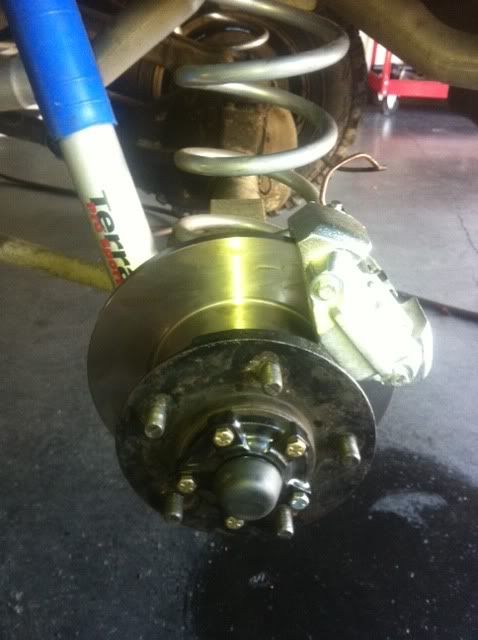This is good stuff. Just a couple nights ago I was starting to research this topic, as my drum brakes need rebuilding (again, again, again, again). No matter what I do, they never seem to work right. I am in the process of placing a parts order to try once again to get them working well, and was just considering that maybe I should just do a disc conversion. I just priced up what I need to buy for my brakes, and it's up to $332 to get my drum brakes working well. I've never really been happy with them though, and this is probably the fourth or fifth time I've been into them for one reason or another in the last six years.
Because I don't even really understand the nuances of the different options, I feel out of my depth and wonder if maybe poorly operating drum brakes are safer than an inadequately understood disc brake conversion. I suppose I could pay someone else to do the work if that's an otherwise show-stopping concern for me.
From this post and others, there seem to be a dizzying array of options. I could use RRC, Discovery, Defender rear or Defender front discs. Some of these options seem to necessitate replacing my brake booster and master cylinder with one from a Defender or possibly a Discovery. Some seem to need new half shafts, and some don't. Some can be bolted on pretty much as-is, and others need machining and fabrication to work right.
The bottom line is that I need my brakes to work well and reliably, of course. I don't really have anyone I trust to do this work for me, now that I think about it, so that means I need to do it myself. That means I need something that's quite easy to source and repair, and is reasonably well documented so I'm not left wondering if the fact that it's 4mm off means I did something wrong, or I need to fabricate a spacer.
I've been amassing the list of links that have been confusing me, which I'll put below in case anyone else cares. I'm happy to get scrapped parts from a NAS Discovery or RRC, but I'd rather buy new parts from the UK and spend more if it means that what I have actually works without having to forge the trail myself.
Neither one of you mentioned that you replaced your brake booster or master cylinder. Did you both find that you had enough fluid and stopping leverage with the stock items?
Does anyone have a recommendation on the best route for me to take if I'm going to try to undertake this swap?
Thanks,
- Andrew.
http://forums.lr4x4.com/index.php?showtopic=11685
http://www.aulro.com/afvb/90-110-13...onversion-county-what-master-cyl-booster.html
http://www.aulro.com/afvb/projects-tutorials/83616-county-drum-rear-disc-rear-booster-upgrade.html
http://www.aulro.com/afvb/technical-chatter/50181-salisbury-disc-brake-conversion.html
http://www.aulro.com/afvb/good-oil/...scs-drums-handbrakes-conversion-calipers.html

